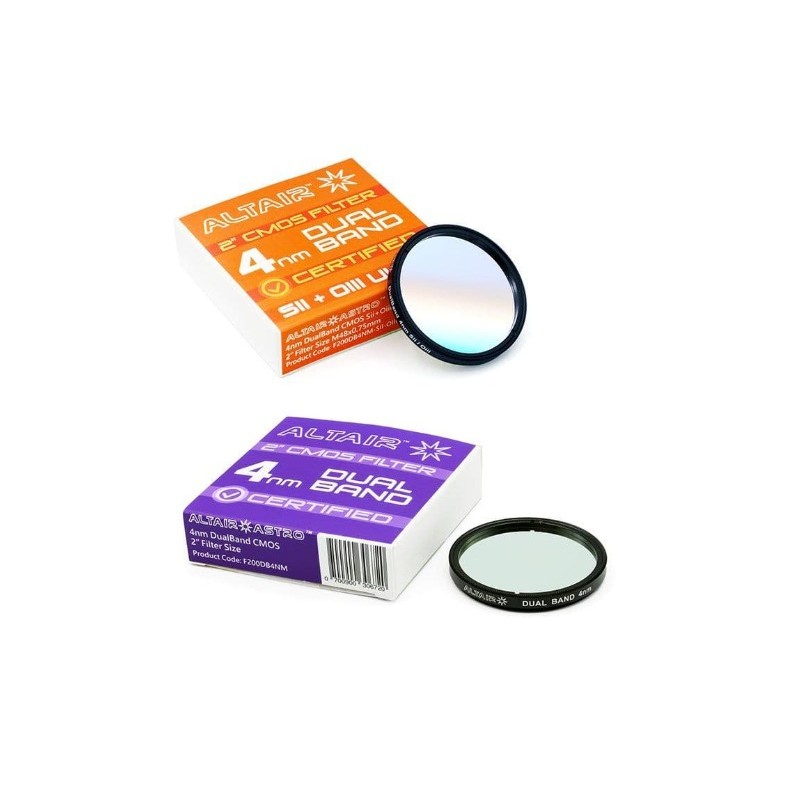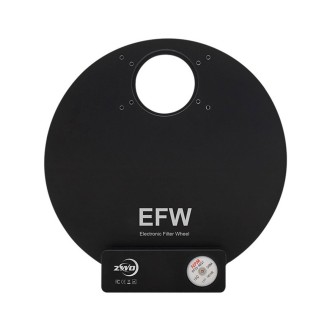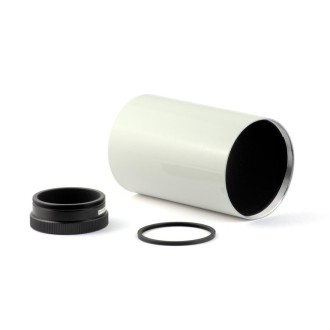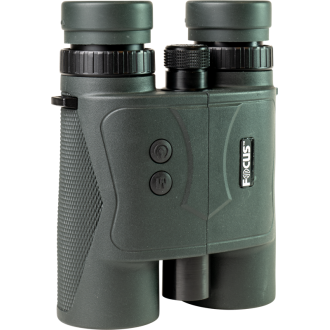Deliver it 15/22 days
ALTAIR ULTRA 4nm dual band HA + OIII and SII + OIII 2" Combo Filter ALTAIR ULTRA
now you can get the 4 nm DualBand Ha OIII filters and the 4 nm DualBand SII + OIII filters together for a lower price!
By using both filters individually, you get twice as much OIII data as you would otherwise get, plus separation of the Ha and SII channels, so you can now get proper Hubble SHO palette-style imaging with a color camera.
| Carrier | Description | Estimated Delivery | ||
|---|---|---|---|---|
 |
Home delivery - International | Home delivery - International |
Friday, 30 May - Friday, 6 June |
|

Home delivery - International
Home delivery - International
Estimated delivery:
Friday, 30 May - Friday, 6 June
now you can get the 4 nm DualBand Ha OIII filters and the 4 nm DualBand SII + OIII filters together for a lower price!
By using both filters individually, you get twice as much Oiii data as you would otherwise get, plus separation of the Ha and SII channels, so you can now get proper SHO Hubble palette-style Hubble images with a color camera.
In the picture:
- ULTRA Ha OIII dual-band 4 nm ULTRA Ha OIII filter with individual test report
- ULTRA SII OIII DualBand 4 nm ULTRA Ha OIII filter with individual test report
| DualBand SII OIII | DualBand Ha OIII | ||
| Ha | north | Y | |
| SII | Y | north | |
| OIII | Y | Y | twice the data of Oiii when used together! |
These filters allow imaging in moonlight and extreme light pollution situations, such as in a large city, with a color CMOS camera, or even in dark conditions if you want total control over your channels.
As a whole, they transmit Ha, SII and OIII light from emission nebulae, with almost total suppression of unwanted light, with OD4/5 or better (0.01%~0.001%) at most unwanted visual wavelengths.
In an Altair-initiated process, each individual filter has an individual test report, unique to that particular filter, not a general test report for the entire batch.
Narrow-band bicolor imaging is a booming new trend in astrophotography, especially popular in areas with light pollution or intense moonlight. First, Altair brought you the TriBand and Quad Band filters, now we have the DualBand Ultra for the most extreme signal versus background performance.
Altair DualBand 4 nm filter features:
- Capture the two main bands of emission nebulae at the same time, while suppressing light pollution, moonlight and airglow.
- More data in less time, extending the imaging window, even in the summer months when it is not yet fully dark. Capture twice as much OIII data and, at the same time, get Sii to complement the Altair Ha OIII dual band filter.
- Extremely steep bandpass produces maximum contrast in extreme light pollution conditions: 4 nm FHWM precisely centered on target wavelengths.
- Halo suppression . We have received no reports of halos caused by this filter during testing.
- Can be used with mono or CMOS One Shot Color (OSC) astronomical cameras to obtain luminance data.
- It includes UV blocking for modified and unmodified DSLR cameras, plus an anti-reflection coating for halo suppression. To see the anti-reflective coating in action, see images showing the same filter with and without the anti-reflective coating on the Capella shining star in exactly the same conditions at the same settings.
- Best performance at focal ratios as fast as F4.8, with contrast increasing as the focal ratio increases. More information on light pollution filter performance and focal ratio here.
- The 2" filter has a standard M48x0.75mm thread and fits inside Altair magnetic filter holders, standard 2" filter wheels, plus Altair's Canon / Nikon DSLR to astro CMOS lens adapters.
Altair ULTRA 4nm DualBand SII OIII filter specifications:
- 1.1st band, OIII CWL500.7 nm FWHM 4 nm tolerance ~0.5 nm, T% 90%
- 2.1st band, SII CWL 671.6 nm FWHM 4 nm tolerance ~0.5 nm, T% 90%
ULTRA Altair 4nm DualBand Ha OIII filter specifications:
- 1.1st band, OIII CWL500.7 nm FWHM 4 nm tolerance ~0.5 nm, T% 88 % ~ 91 %
- 2.1st band, Ha CWL 656.3 nm FWHM 4 nm tolerance ~0.5 nm T% 90 %~94 %
Both filters shared specifications:
- 1.85 mm thick parfocal optical glass with 30 arc second parallelism.
- Individual spectrographic test report to ensure quality and performance
- OD4/5 blocking (0.01%~0.001%) over most unwanted wavelengths
- Si02 "hard" top coat with UVIR blocking and anti-reflection coating for durability.















